

Iconic Olympic Architecture in Honor of the 2024 Paris Olympics
Summary
The Summer 2024 Paris Olympics are set to be a spectacular blend of top-tier athletic performances and iconic architecture, with Paris’s rich history and state-of-the-art facilities providing a stunning backdrop. The article celebrates the architectural marvels that have hosted the Olympics over the years, from Beijing’s Bird’s Nest to Munich’s Olympiapark, and highlights the upcoming venues in Paris like the Grand Palais and Stade de France. It also looks forward to the performances of notable athletes like Simone Biles and Katie Ledecky, underlining the Olympics as a global event of unity, culture, and sporting excellence.
Reflection Questions
- How do the architectural designs of Olympic venues reflect the cultural and historical context of their respective host cities?
- In what ways do the Olympics serve as a platform for showcasing not just athletic talent but also advancements in sustainable building practices?
- What impact do you think hosting the Olympics has on a city’s infrastructure and global image long after the games have concluded?
Journal Prompt
Reflect on a time when you witnessed or participated in an event that brought together diverse groups of people. Describe the atmosphere and the interactions that took place. What did you learn about the power of shared experiences in creating unity and understanding among different cultures? How can these insights apply to global events like the Olympics?
With athletes presenting the absolute pinnacle of human performance, the Summer Games are engaging, exciting, and filled with cultural exchange. But hosting venues are also icons of Olympic history, so let’s celebrate those buildings and their architects! From Zaha Hadid’s London Aquatics Centre to Roger Taillibert’s Montreal Olympic Stadium to Jacques Herzog and Pierre de Meuron’s Bird’s Nest, below are some of the most incredible structures in Olympic history.
Why We Love the Summer Olympic Games
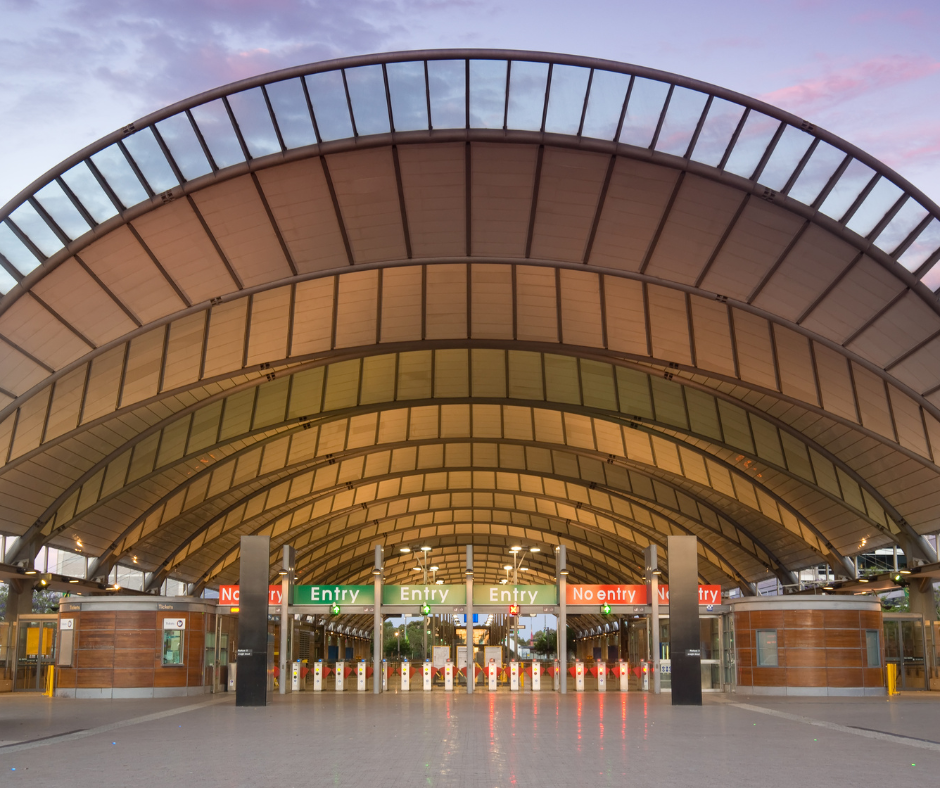

Before we launch into our list of the most iconic Olympic stadiums around the world, let’s celebrate the Games themselves! After all, there are few events as iconic and engaging as the Olympics. We love the Summer Games because they represent the pinnacle of human athletic achievement, bringing together the best athletes from around the world to compete in a wide range of sports.
The Games create a unique sense of global unity and celebration, as people from diverse cultures and backgrounds come together to witness and support their favorite athletes and nations. Plus, Olympic events showcase the host city’s culture and hospitality, providing a global stage for its unique traditions and innovations. This blend of athletic excellence, cultural exchange, and shared human spirit makes the Summer Olympics a beloved and eagerly anticipated event worldwide.
The Theme for the Summer 2024 Olympic and Paralympic Games


The theme for the Paris 2024 Olympic Games is centered around the slogan “Games Wide Open,” which emphasizes inclusivity, diversity, and the celebration of sport. The visual identity of the Games combines French elegance with bold colors, reflecting the rich cultural heritage of France. The design incorporates symbols of French urban landscapes, like the iconic paving stones of Paris, representing both the tangible and intangible heritage of the country.
Women We Can’t Wait to Watch!
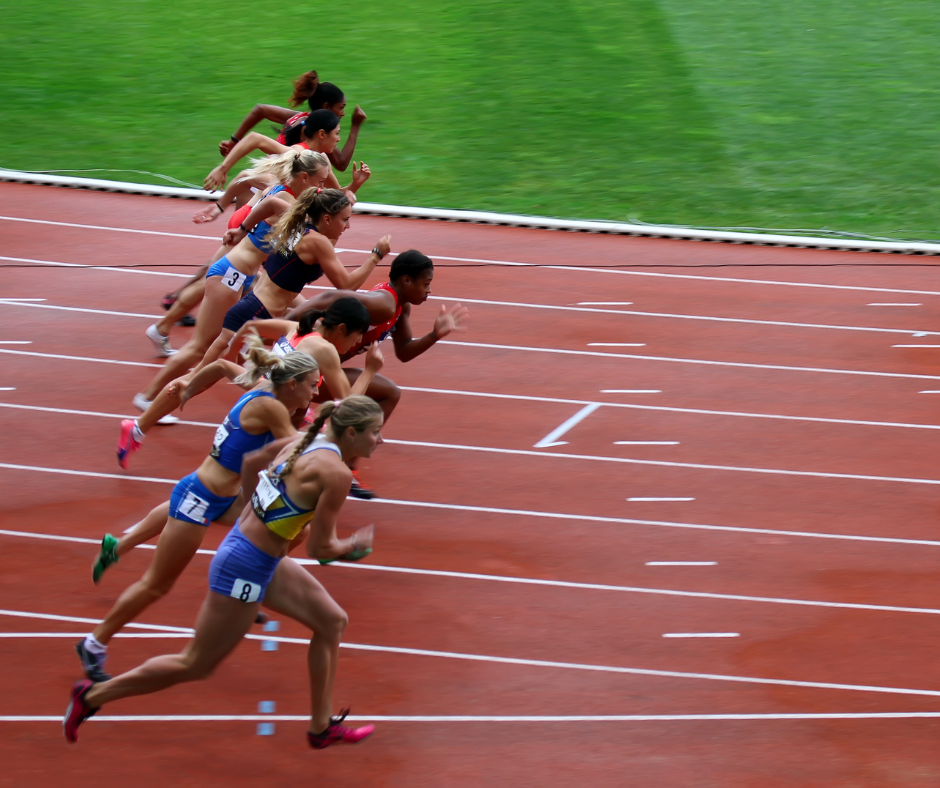

We are especially excited to see several remarkable women compete in this year’s Summer Olympic Games in Paris. Some of the standout athletes include Simone Biles, who is making a highly anticipated return to the Olympics, Athing Mu, Sydney McLaughlin-Levrone, and Katie Ledecky. Biles, a multiple gold medalist and one of the greatest gymnasts of all time, aims to add to her impressive collection after overcoming significant challenges during the Tokyo 2021 Games.
In track and field, Athing Mu, a two-time gold medalist who broke a long-standing American record in the women’s 800m, is set to shine once again. Her speed and strength make her a favorite in multiple events.
Sydney McLaughlin-Levrone, who shattered the world record in the 400m hurdles in Tokyo, is another key athlete to watch. Her incredible performances have made her one of the most exciting athletes in the sport. Katie Ledecky continues to dominate swimming, with her sights set on adding more medals to her historic career. From beach volleyball to cycling events, we simply cannot wait for this year’s games!
Why Paris is This Year’s Host City
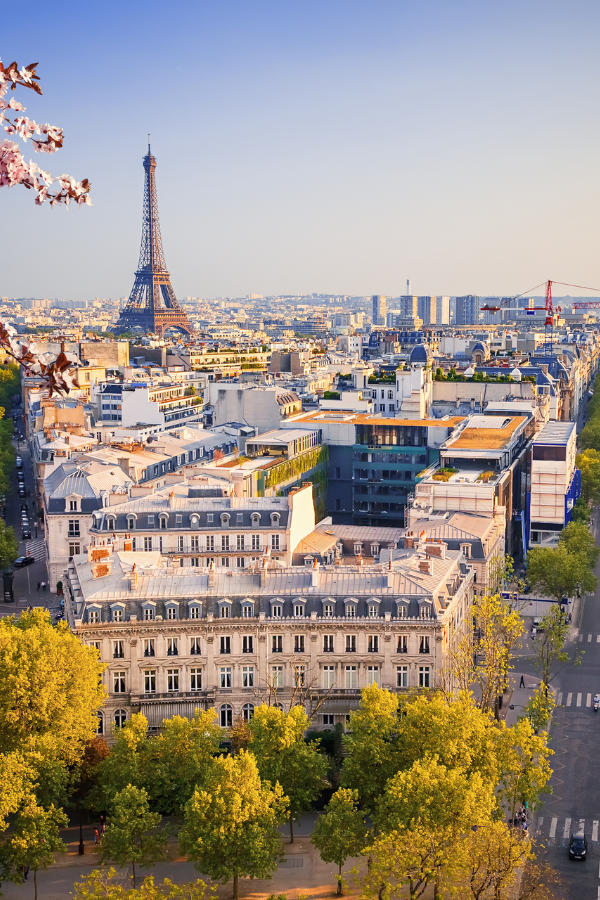

Paris was chosen as the host for the 2024 Olympic Games for several reasons. First and foremost, Paris boasts a robust infrastructure and world-class facilities. The city has a proven track record of hosting major international sporting events, featuring renowned venues like Stade de France and Roland Garros. Their bid included detailed plans for utilizing existing venues and constructing new ones, ensuring top-notch facilities for all sports. Coupled with its extensive metro, bus, and rail systems, Paris demonstrated it could efficiently handle the transportation needs of athletes, officials, and spectators, ensuring smooth and timely travel between venues.
Plus, it will be the centenary of the last time Paris hosted the Summer Olympics in 1924, making it a significant historical milestone. Secondly, Paris is known for its rich cultural history and vibrant urban life, which aligns well with the Olympic spirit of bringing people together. The city also demonstrated widespread public enthusiasm and solid governmental endorsement through opinion polls and public support campaigns. Paris’s commitment to environmental sustainability was another reason for the committee’s choice. Their plans to minimize the ecological footprint of the Games included using renewable energy, sustainable construction practices, and promoting eco-friendly transportation options.
These Historic Paris Buildings Will Serve as Competition Venues for the Summer Games
Paris is incorporating both new and historic venues for the games. From the Champ de Mars to the Grand Palais to the Château de Versailles, here are some of the incredible buildings associated with the Paris 2024 Olympics.
Grand Palais
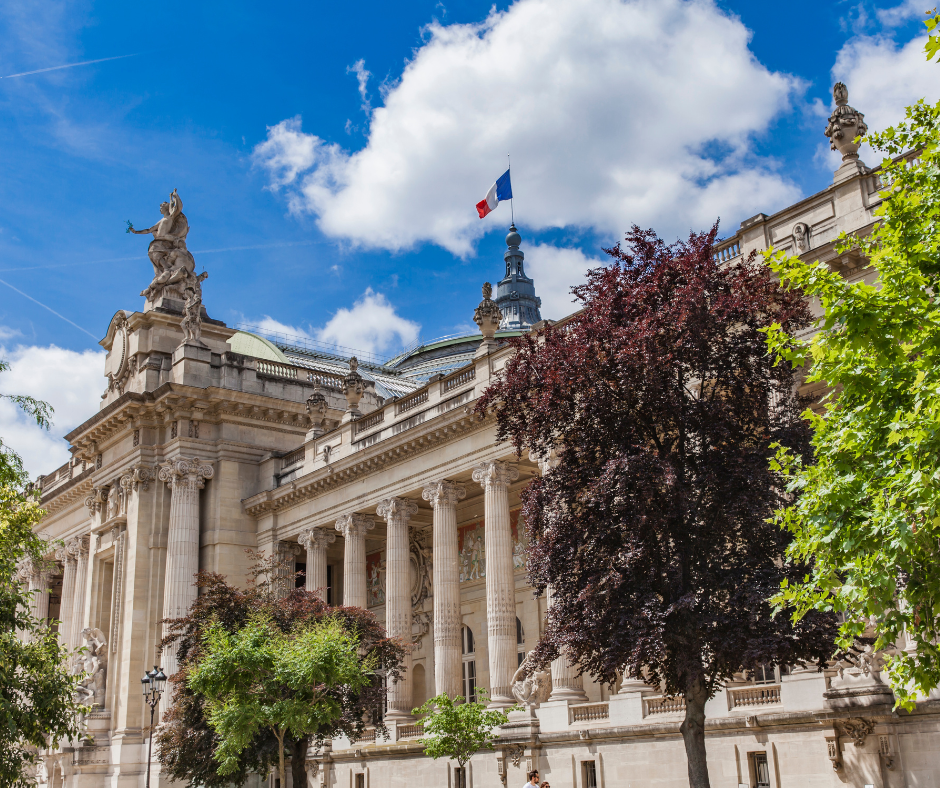

An iconic structure originally constructed for the Universal Exposition of 1900, the Grand Palais is set to host fencing and taekwondo events. Its large glass dome and classic Beaux-Arts architecture make it a historic and prestigious venue for the games. Four years ago, the Grand Palais played host to the World Fencing Championships.
Champs de Mars
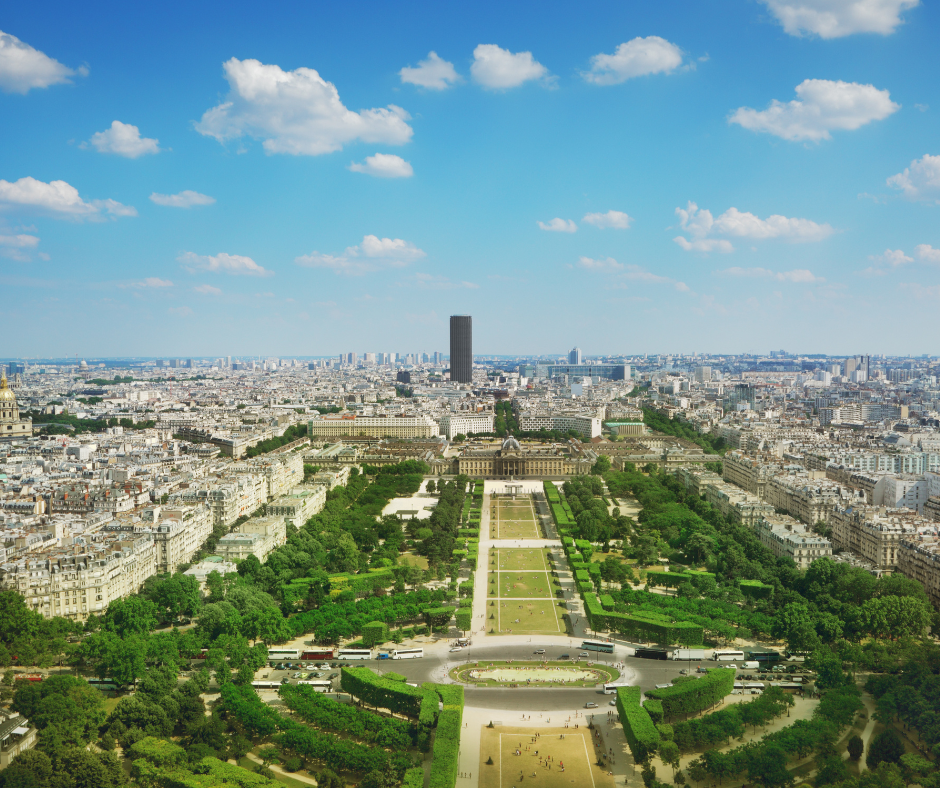

Located at the foot of the Eiffel Tower, the Champs de Mars will transform into a temporary venue for beach volleyball. This integration of a sports venue with one of the world’s most famous landmarks will create a stunning visual and cultural backdrop.
Stade de France
Built for the 1998 FIFA World Cup, the Stade de France in Saint-Denis is the country’s national stadium and will be the main venue for athletics and the opening ceremony and the closing ceremonies. Its design, featuring an elliptical roof that appears to float above the stadium, makes it a modern architectural symbol in Paris.
Fuel your creative fire & be a part of a supportive community that values how you love to live.
subscribe to our newsletter
Paris La Défense Arena
Known for its modern, futuristic design, this arena is one of the largest indoor venues in Europe and will host gymnastics and trampoline events. The building’s innovative design includes a wave-like exterior and a flexible interior that can accommodate a variety of sports and entertainment events.
Les Invalides
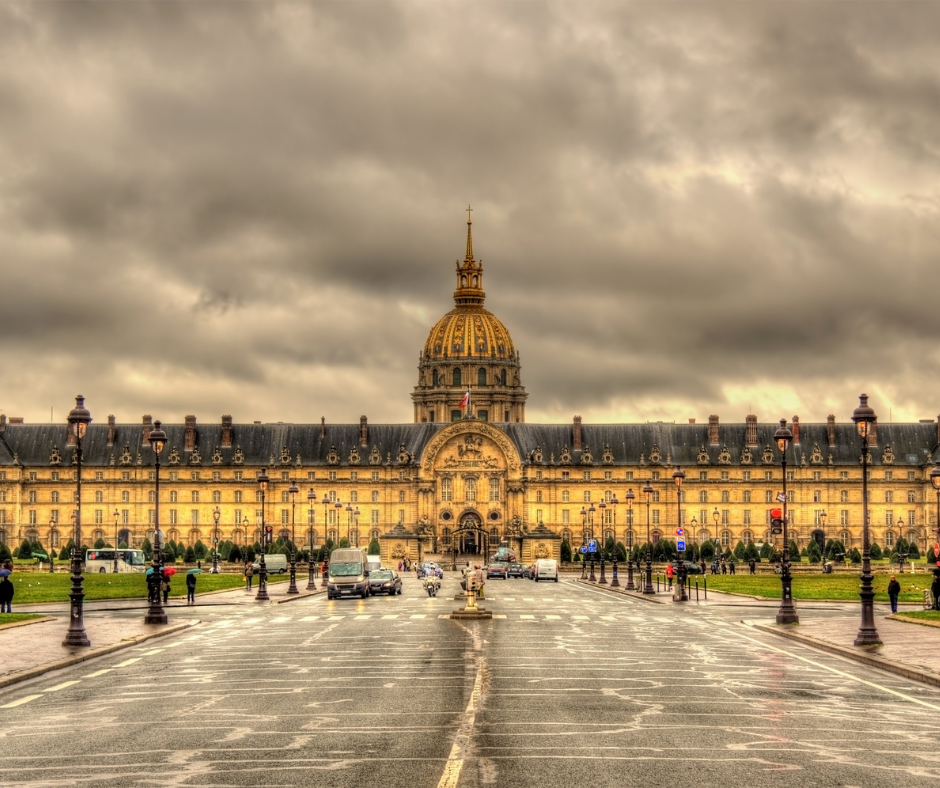

Known for its historical and architectural significance, Les Invalides, with its iconic golden dome, will host archery. The use of this historic site will blend Paris’s rich history with each modern Olympic event.
Château de Versailles
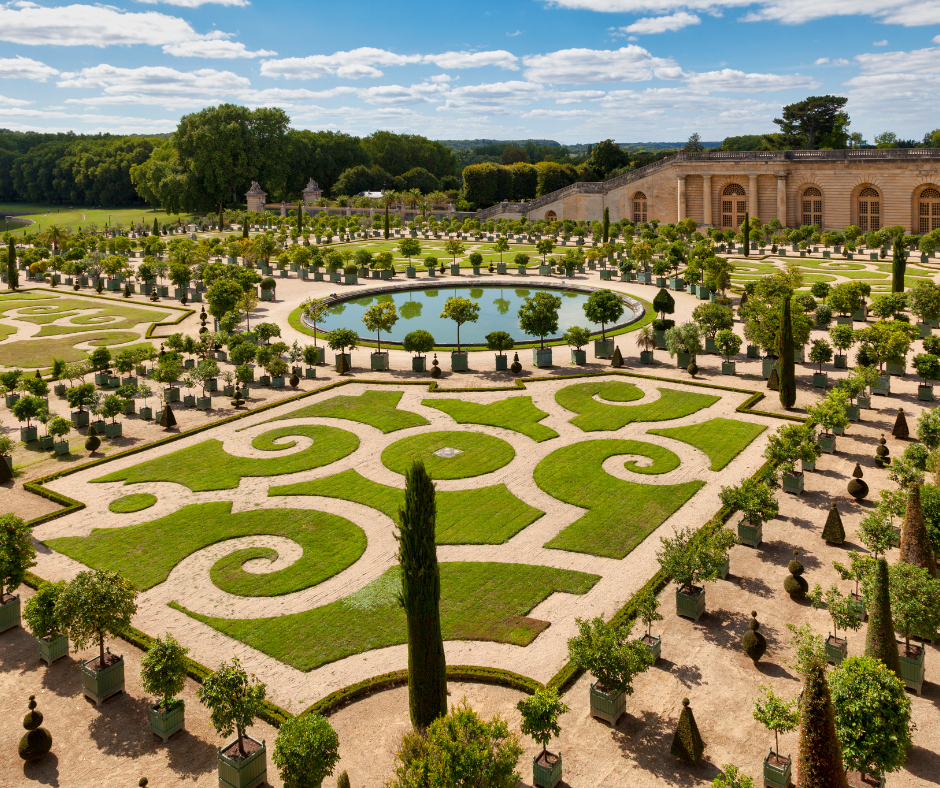

The Château de Versailles, one of France’s most historic and iconic landmarks, is slated to host the equestrian events and the modern pentathlon events during the 2024 Paris Olympics. A temporary outdoor arena will be constructed for these events.
Iconic Olympic Stadiums to Celebrate Before the Paris Games
Now, let’s celebrate the iconic architecture of Olympic structures across the globe! These buildings not only served as sporting venues during the Games but also as symbols of the architectural aspirations and cultural values of their respective times. They continue to be celebrated for their innovative designs and engineering feats.
Bird’s Nest – Beijing National Stadium (2008 Olympics)
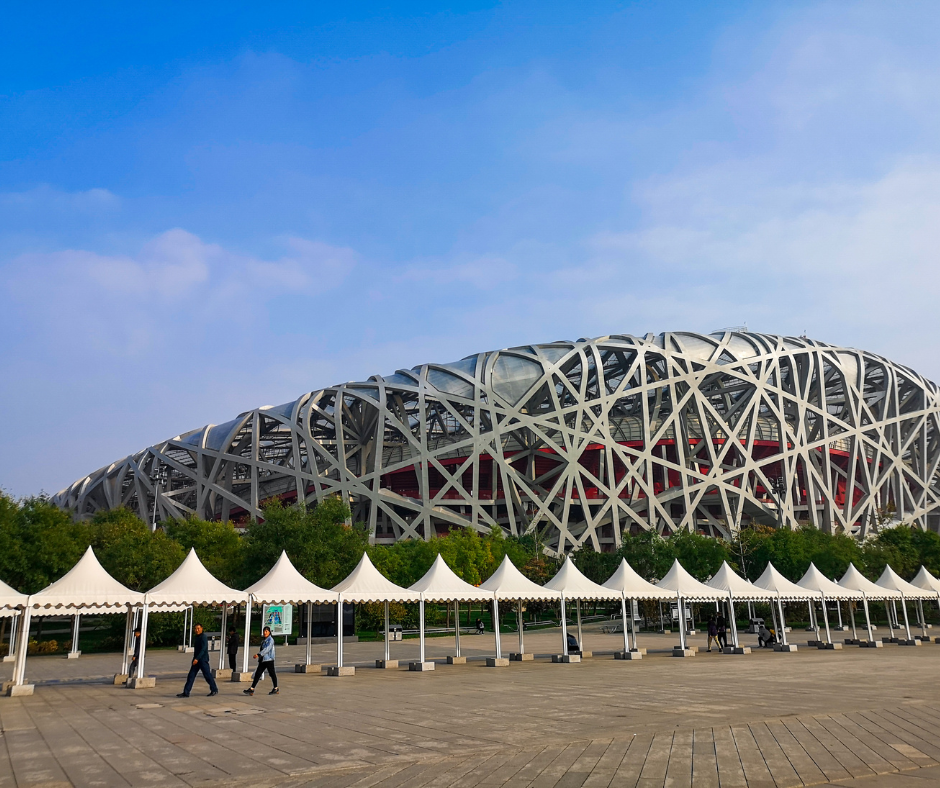

The Bird’s Nest, or Beijing National Stadium, is a standout piece of architectural genius created by Swiss architects Jacques Herzog and Pierre de Meuron for the 2008 Beijing Olympics. Its design, which resembles a bird’s nest with its complex, interlocking steel frame, was not only an aesthetic decision but also a structural one.
This intricate latticework of steel not only captivates visually but also supports the roof of the stadium without the need for pillars, thus allowing unobstructed views for the spectators inside. This design was a result of collaboration that included the Chinese artist Ai Weiwei as a consultant, who helped guide the aesthetic direction to fuse it with cultural symbolism, embodying a nest as a universal sign of hospitality and warmth.
The stadium’s architecture was a groundbreaking achievement in engineering, employing 42,000 tons of steel despite initial designs calling for much more, before efficiency measures were implemented. It covers 258,000 square meters and has a seating capacity of 80,000, making it one of the largest and most complex steel structures in the world. Its eco-friendly aspects were also notable; for instance, rainwater collected on the roof is used to flush toilets and irrigate the green areas surrounding the venue.
The Bird’s Nest Today
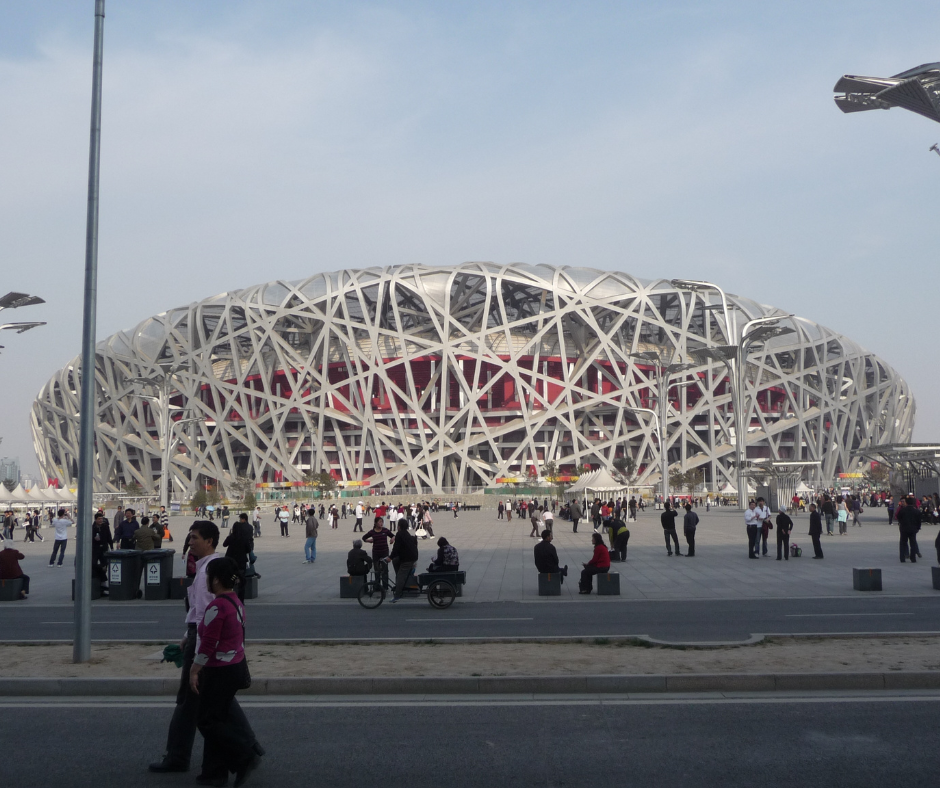

Since the 2008 Olympics, the Bird’s Nest has become a cultural icon and a symbol of modern China. It represents China’s ability to blend innovative design with practical functionality, bridging traditional cultural symbols with modern aesthetics.
The stadium has hosted various significant events since the Olympics, including sporting events, concerts, and public gatherings. It stands today not only as a popular tourist attraction but also as a proud reminder of the spectacular 2008 Beijing Olympics and China’s rising prominence on the world stage in various sectors including sports, culture, and architecture.
Olympiapark – Munich (1972 Olympics)
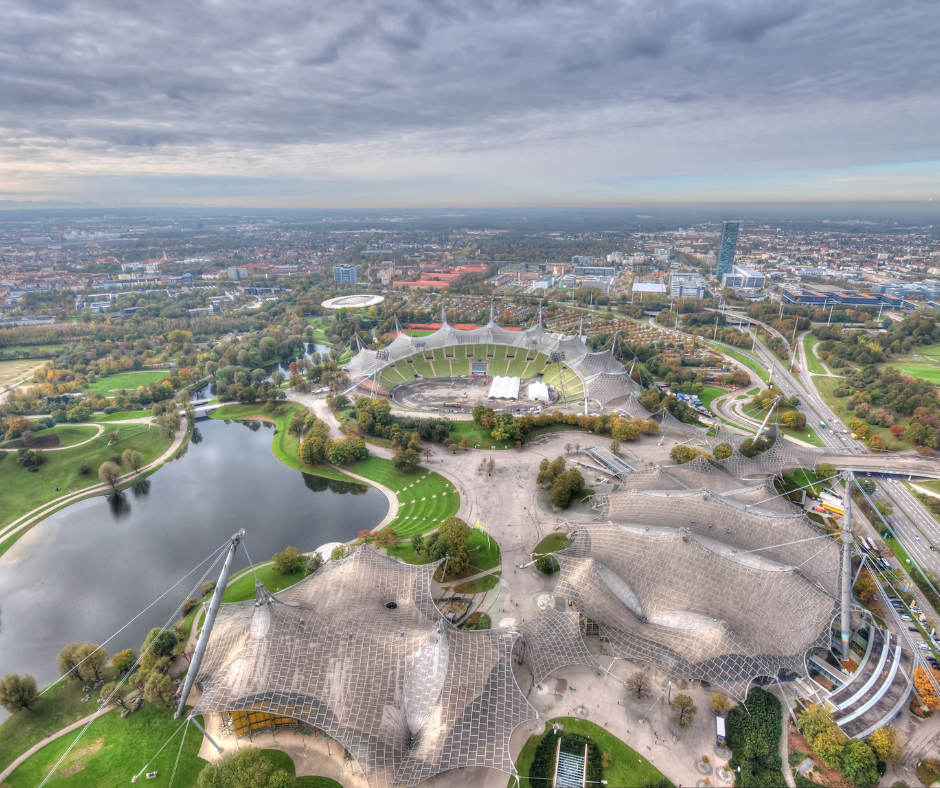

The Olympiapark in Munich, designed for the 1972 Summer Olympics, represents a pivotal moment in architectural history, particularly in the context of Olympic venues. The design, led by the architectural firm Behnisch & Partners, was conceived with a clear vision: to reflect a modern, democratic Germany, distinctly moving away from the imposing, monumental architecture of the Nazi era. The intent was to create a space that was open, inviting, and transparent, embodying the democratic values that West Germany wanted to project to the world.
The most striking feature of the Olympiapark is the sweeping, tent-like canopies of the Olympiastadion (Olympic Stadium), which were designed by the architect Günter Behnisch and the engineer Frei Otto. These canopies are made of a lightweight, translucent acrylic glass and are supported by a network of steel cables, creating a dramatic yet airy effect.
This design choice was not just aesthetic but also functional; it allowed natural light to permeate the space, reducing the need for artificial lighting and creating a feeling of openness and connection with the environment. The flowing forms of the roofs mimic the landscape of the Bavarian countryside, integrating the structures into their surroundings rather than imposing upon them.
The Munich Olympic Park Today
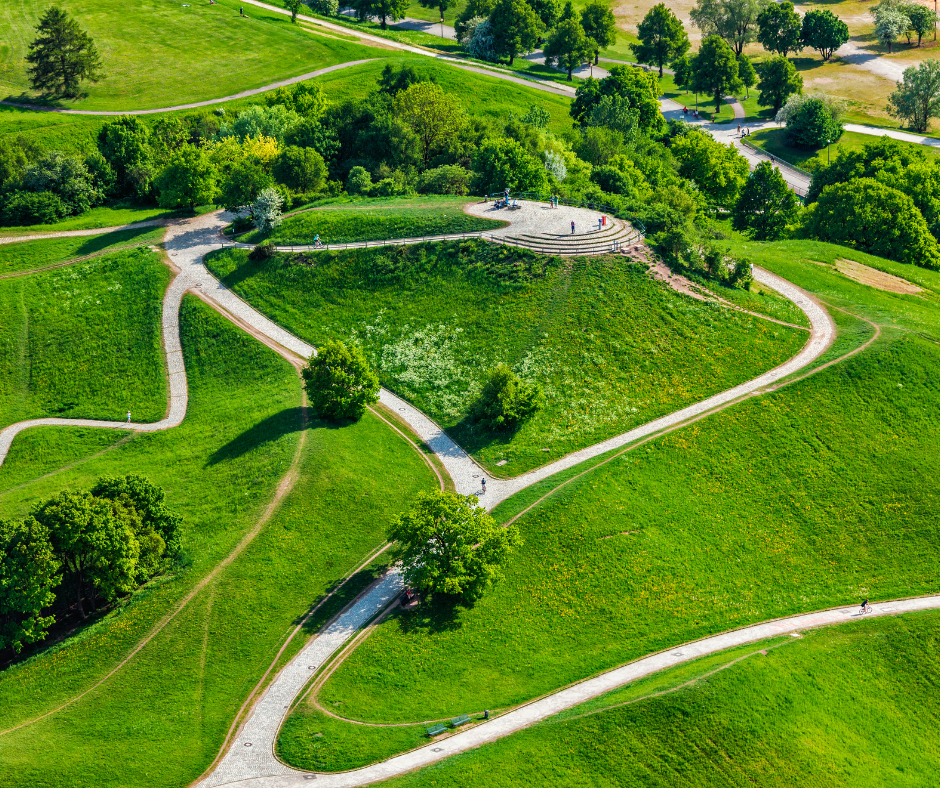

This architectural approach was revolutionary, particularly in the context of Olympic architecture, which had often favored grandeur over human scale and experience. The Munich Olympic Park was designed to be a place for everyone, not just a stage for sporting feats but also a public park accessible to visitors and residents alike. After the Olympics, the park continued to serve as a recreational area, with its facilities used for a wide range of sports and cultural events, thereby fulfilling its promise of lasting utility and integration into the fabric of the city.
The Olympiapark’s design has had a lasting influence on Olympic architecture, inspiring future Games to consider how venues might better reflect and serve the needs of their communities. Its legacy is one of innovation and transformation, demonstrating how architecture can express and shape the identity of a place and its people.
Olympic Stadium – Montreal (1976 Olympics)
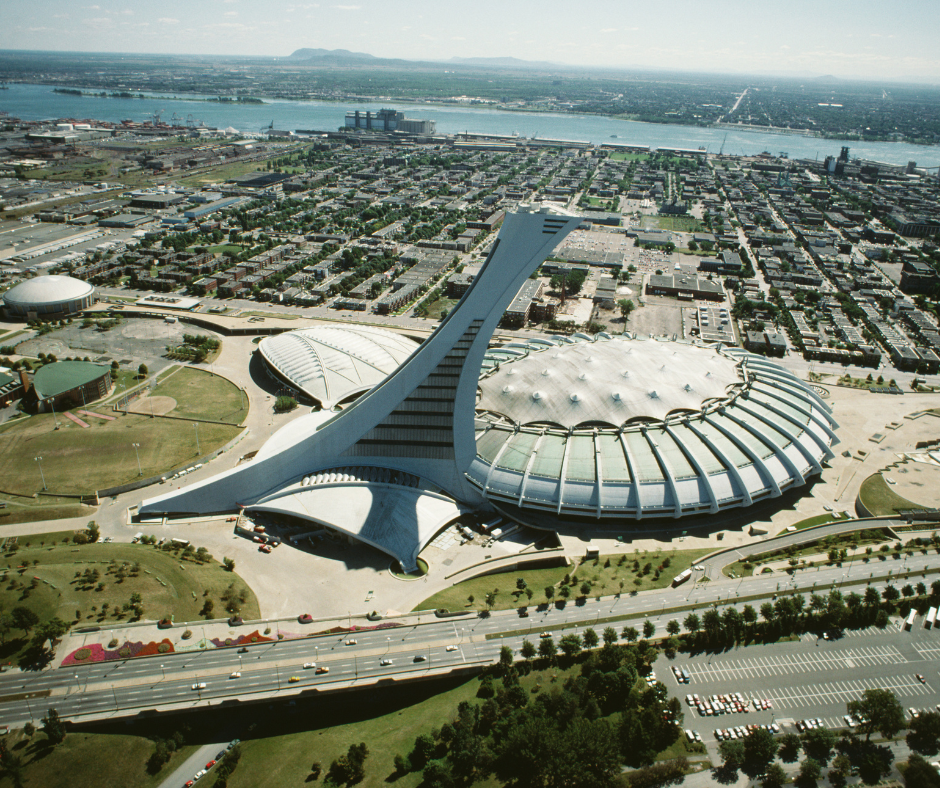

The Olympic Stadium in Montreal, designed for the 1976 Summer Olympics, is a notable example of the bold architectural aspirations of the 1970s. Designed by French architect Roger Taillibert, the stadium is particularly famous for its monumental inclined tower, which is not only a striking visual feature but also an engineering marvel. Standing at 175 meters (574 feet) tall, it is the tallest inclined tower in the world, and it serves a critical functional purpose by supporting the stadium’s roof with cables. This design feature exemplifies the era’s fascination with futuristic and technologically advanced structures.
Roger Taillibert’s design philosophy for the Olympic Stadium was rooted in expressing structural honesty and aesthetic boldness. The tower’s incline, which leans at a dramatic angle, is visually arresting and was intended to evoke a sense of dynamism and movement. The roof, originally made of a Kevlar membrane, was one of the first of its kind, suspended from the tower by cables, showcasing innovative uses of new materials and structural techniques. This design was meant to symbolize modernity and the forward-looking spirit of Montreal, projecting an image of the city as a hub of innovation and progress.
Controversy Over Montreal’s Olympic Stadium
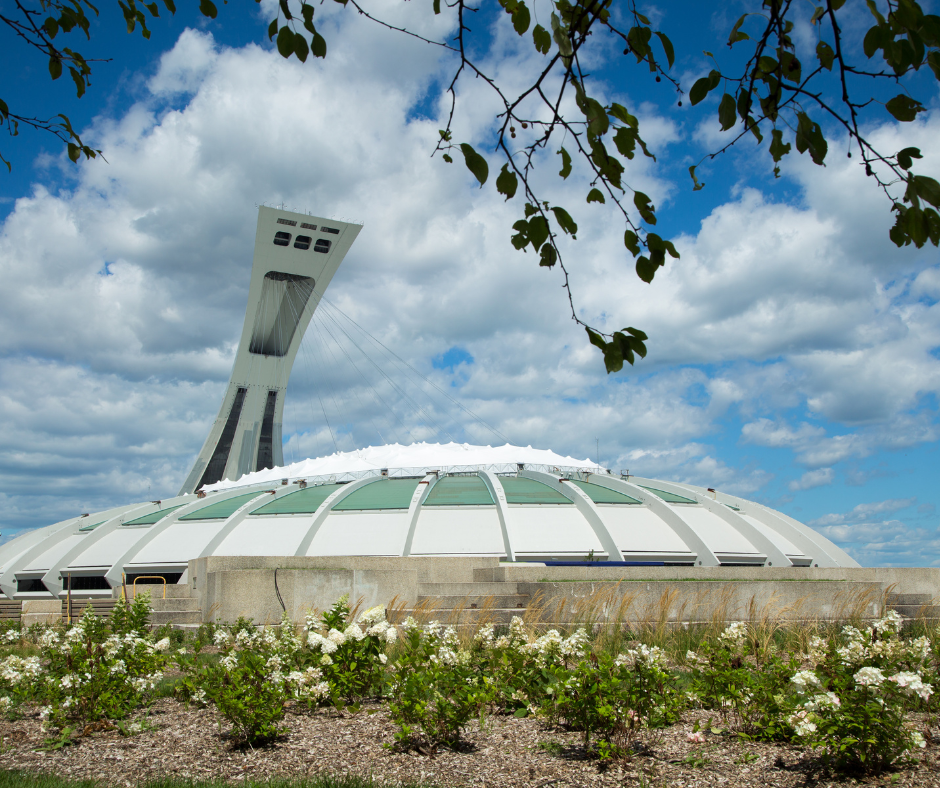

However, the stadium’s construction and legacy have been mired in controversy and challenges. Known colloquially as “The Big O,” a reference to its shape and the significant financial overruns associated with its construction, the stadium was not completed on time for the Olympics. Moreover, the roof mechanism, which was intended to be retractable, faced multiple operational issues throughout its history. Despite these challenges, the Olympic Stadium remains a prominent feature of Montreal’s skyline and a testament to the architectural and engineering ambitions of its time.
In the years following the Olympics, the stadium has been used for a variety of purposes, ranging from sports events to concerts and exhibitions, although it has struggled to find a permanent and sustainable role in the city’s cultural landscape. The Olympic Stadium, with its unique design and tumultuous history, stands as a symbol of 1970s architectural and urban ambition, reflecting both the aspirations and the complexities of the era in which it was built.
London Aquatics Centre (2012 Olympics)
The London Aquatics Centre, designed by the renowned architect Zaha Hadid for the 2012 Olympics, is a striking example of contemporary architectural design that captures the fluidity and dynamism of water sports. Hadid’s design is highlighted by the facility’s iconic wave-like roof, which swoops and flows over the structure, mirroring the movement of water. This design not only aesthetically aligns with the aquatic events that take place within but also symbolizes the grace and elegance of athletic performance.
The roof, expansive and seemingly weightless, stretches over the pools and seating areas, creating a visually captivating and functional space that enhances the spectator experience. The use of glass walls further adds to the building’s openness, allowing natural light to flood the interior and providing views of the Olympic Park.
The London Aquatics Center Today
Beyond its Olympic legacy, the London Aquatics Centre has transitioned seamlessly into a public facility, embodying Zaha Hadid’s vision of creating spaces that resonate with both their immediate purpose and the broader community. This transition underscores the design’s versatility and sustainability, key considerations in contemporary architecture.
The centre continues to serve as a venue for major competitions as well as a community swimming facility, promoting aquatic sports among Londoners and visitors alike. The Aquatics Centre stands as a testament to Hadid’s pioneering approach to architectural form and function, making it a landmark not just in terms of design but also in contributing to the legacy of the London Olympics, promoting ongoing community engagement and sporting excellence.
Centro Acuático Nacional de Beijing (Water Cube) (2008 Olympics)
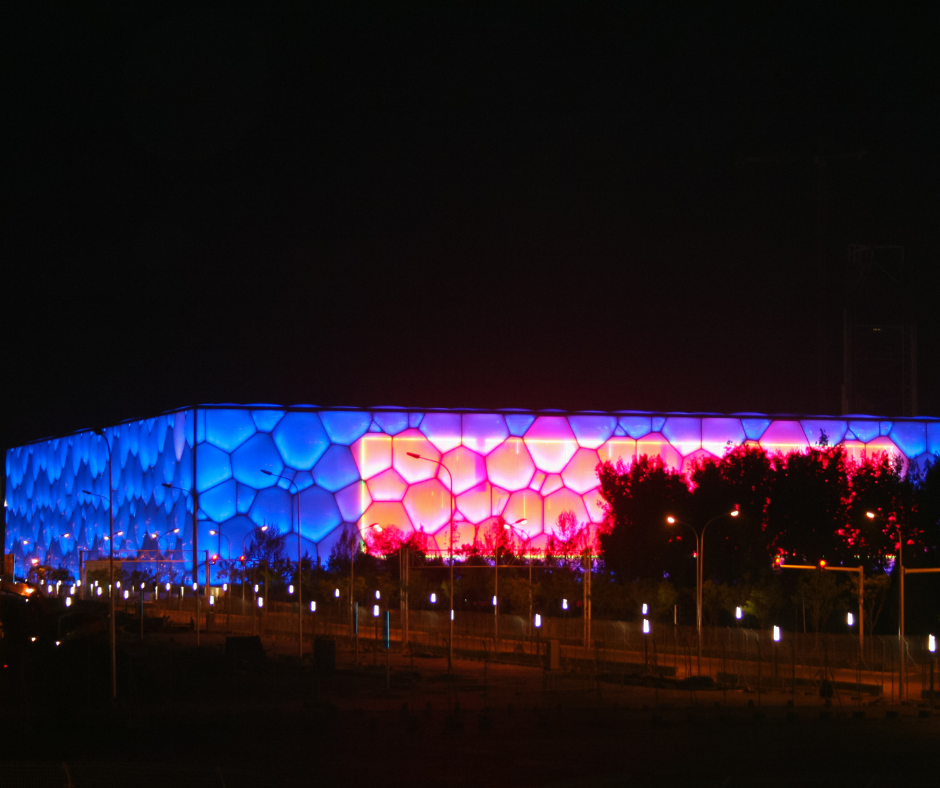

The Centro Acuático Nacional de Beijing, commonly known as the “Water Cube,” is an architectural and engineering marvel that played a central role during the 2008 Beijing Olympics. Designed by PTW Architects, CSCEC, and Arup, the building’s design is instantly recognizable due to its unique bubble-like façade, which consists of thousands of ETFE (ethylene tetrafluoroethylene) pillows.
This translucent cladding was inspired by the natural pattern of bubbles in soap foam, effectively capturing the aquatic theme of the venue. The use of ETFE, a material chosen for its durability, light weight, and resistance to pollution, allows for a striking visual representation of water while bathing the interior in soft, diffused light, creating an ethereal atmosphere that enhances the aquatic competitions held within.


Moreover, the Water Cube’s design incorporated advanced ecological and energy-efficient technologies. The ETFE pillows contribute significantly to the building’s thermal insulation, helping maintain comfortable temperatures year-round while using less energy. The building’s surface also collects solar energy, which is used to heat the pools and the interior, reducing the overall energy expenditure.
Will You Attend the 2024 Summer Games in Paris?
As we eagerly anticipate the upcoming Summer 2024 Paris Olympics, we cannot help but feel a surge of excitement about the incredible convergence of top-tier athletic talent and architectural grandeur set against the backdrop of one of the world’s most enchanting cities. Paris, with its rich history, culture, and art, is poised to provide a spectacular stage for the games.
The city’s blend of historic landmarks and state-of-the-art facilities underscores a deep respect for tradition coupled with a forward-looking vision for the future of sports. This unique mix not only sets the scene for thrilling Olympic competition but also highlights the unifying power of the games, bringing together people from all corners of the globe.
Paris is ready to show the world once again why it is a city like no other. We at DesignDash are incredibly excited for the games to begin and for the world to witness the magic that happens when human achievements and architectural wonders meet on such a grand scale. Will you attend? Please let us know in the comments below!








